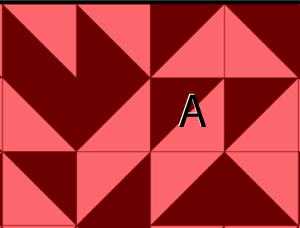
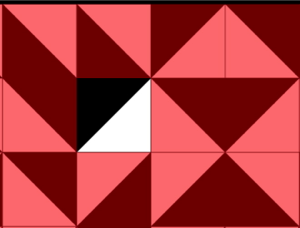
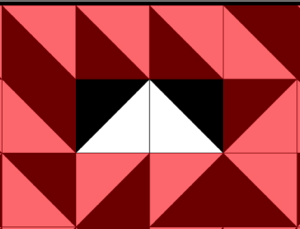
Tile Rotation is an iOS app where tiles are rotated in order to produce an arrangement that matches a hidden solution.
 |
 |
 |
The tiles come in various patterns. In the most basic pattern, there is a diagonal line from one corner to the opposite corner of each square. One one side of the diagonal, the tile is dark. On the other side, it is light. The user's task is to rotate tiles so that touching edges are the same color. In the illustration, above, tile A is rotated 90 degrees clockwise so that the light portion aligns with the light part of the tile to its left. That tile then touches all its neighbors with the same color, so the red mask is removed, as shown in the center picture.
Next, the user rotates the tile above the one previously rotated. The result is that the tile previously labeled A loses its red color mask. The above images are crops from the upper, left portion of the screen shown below. What follows is a progression of the app as additional tiles are rotated. To facilitate describing the tiles, they are referred to by coordinates, with (1,1) being the top, left tile, (2,1) being the tile to its right, (1,2) being the tile just below it. So the top right tile is (12,1), for example.
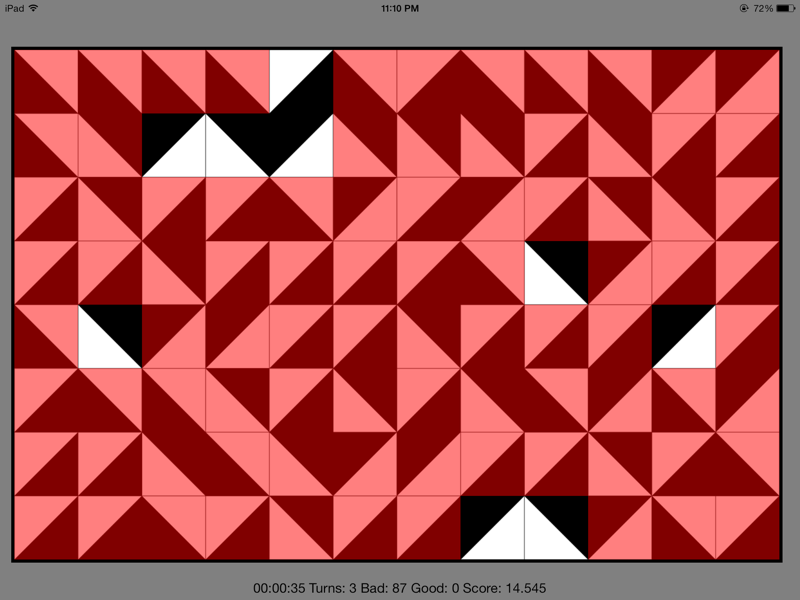 |
Here is the full screen after tile (5,1) is rotated clockwise.
This tile is on the top row, so since there is no row above it, it
needs to line up with the corresponding tile at the bottom, (5,8),
i.e., the bottom edge of (5,8) has to match the top edge of (5,1).
In this case, they are both light, so that is considered a match. Tile (5,1) loses its red mask because all of the following are true:
|
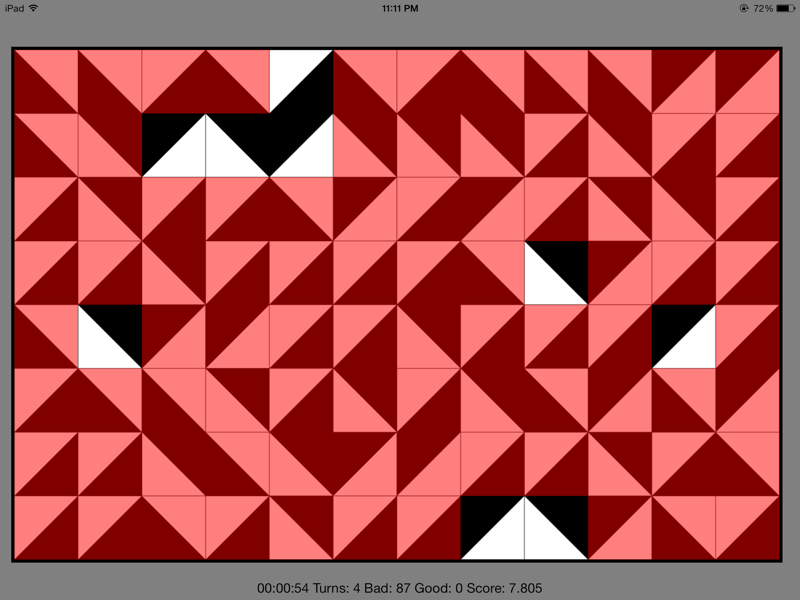 |
Here (3,1) is rotated so that its right edge is the same color as the left edge of (4,1). Both retain the red mask because their top edges don't match the bottom edges of the corresponding tiles on the bottom row. |
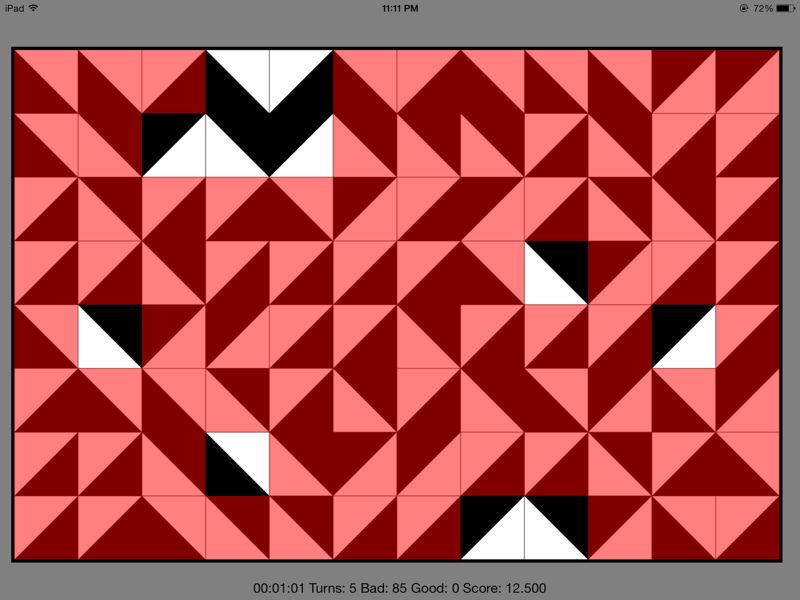 |
Here (4,8) has been rotated so that its bottom edge matches the top edge of (4,1) so (4,1) loses its red mask. |
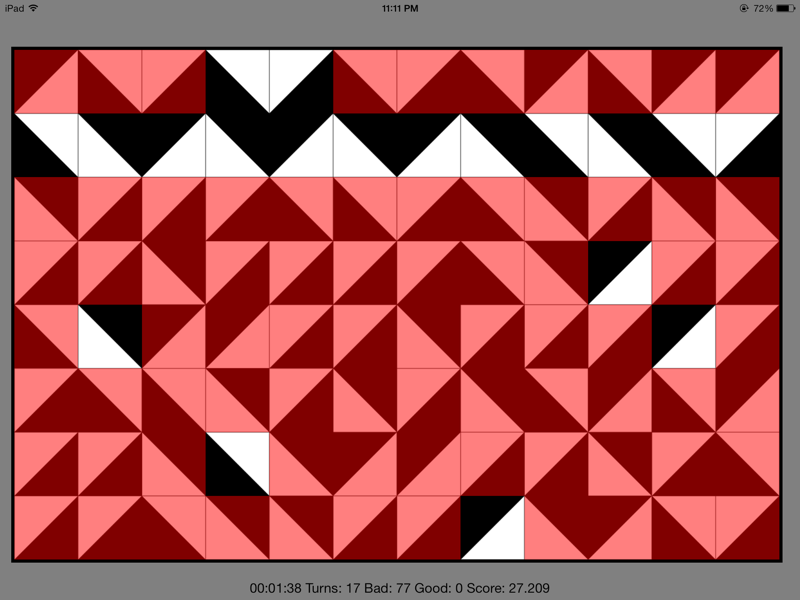 |
Here a whole row of tiles is without the red mask because each tile has the same color on the top as the bottom of the tile touching it above, has the same color on the bottom as the top of the tile touching it below, and the same color touching on left and right. |
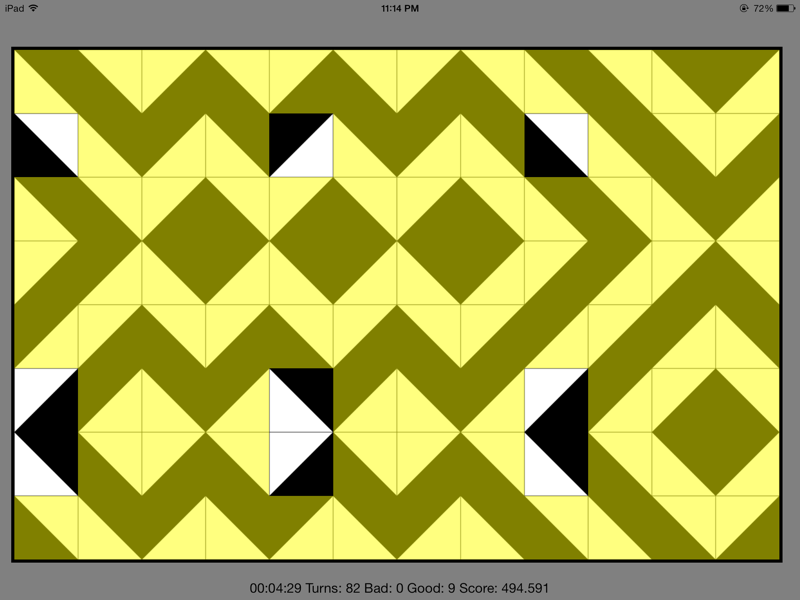 |
After all the tiles are rotated so that all four neighboring tiles
of each tile in the puzzle is touching with the same color, the app
moves to its next phase -- matching an internal pattern. When the app starts, it creates a solution pattern. All tiles that match the solution pattern in the second phase are black and white. Tiles that don't match are colored yellow. The user's task is to rotate tiles to eliminate the yellow. This time, when a tile is rotated either an entire row or an entire column of tiles is rotated together. If a tile were rotated by itself, it would no longer touch its neighbors with the same color, so the app automatically also rotates neighboring tiles so that all tiles are still touching their neighbors with edges of the same color. |
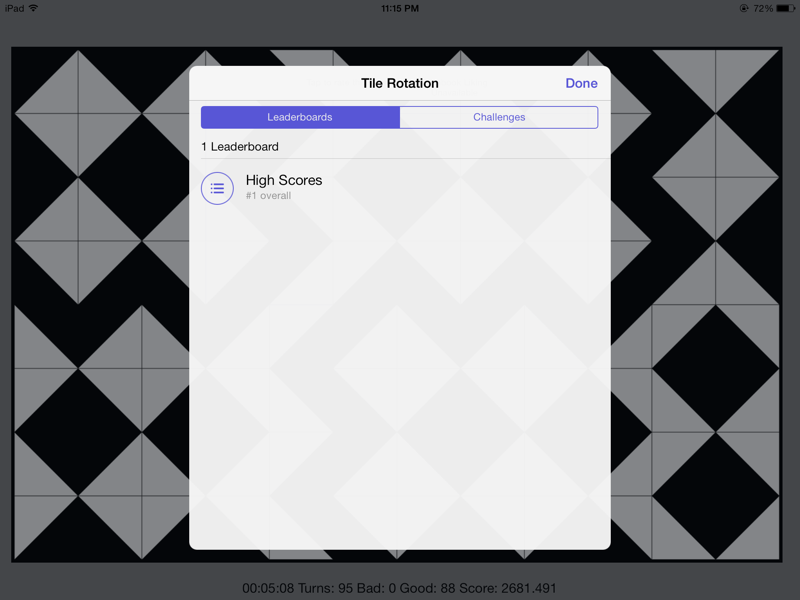 |
When the pattern matches the solution pattern stored internally, the puzzle is completed, and the score is reported to the game center. |
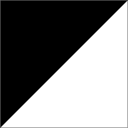 |
This is the basic tile pattern, used in the illustrations, above. |
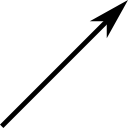 |
The app works exactly as with the basic tile pattern, but with the arrow tile, there is no dark and light side to the tile. Instead, the user aligns edges on the left side of the arrow to edges of other tiles on the left side of the tile on that arrow, or right edges to right edges. |
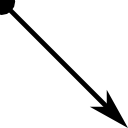 |
This tile is oriented perpendicular to the previous tile. This time, instead of aligning right side of arrow with right side of arrow, arrowheads line up with arrowheads and tails line up with tails. |
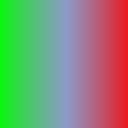 |
This tile works just like the previous tiles but may be more challenging because it is not symmetrical about a diagonal. |
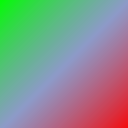 |
This tile has the same gradient as the previous design, but since it's oriented about a diagonal, it's probably easier to solve: align green with green and align red with red. |
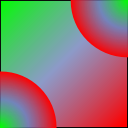 |
This tiles is just like the previous pattern but also has arcs that line up to form circles. |
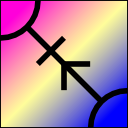 |
This is rather like the previous pattern but with male/female designs and corresponding stereotypical male and female colors. Align male to male, female to female, pink to pink, blue to blue. |
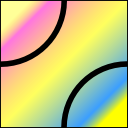 |
This is just another pattern, but the black arcs align to form a maze-like pattern. |